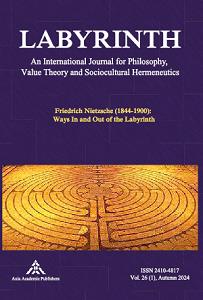Behold the Man, again: What Nietzsche hopes his Readers will see in 'Ecce Homo'
Behold the Man, again: What Nietzsche hopes his Readers will see in 'Ecce Homo'
Author(s): Daniel ConwaySubject(s): Philosophy, Ethics / Practical Philosophy, 19th Century Philosophy, Philosophy of Religion
Published by: Axia Academic Publishers
Keywords: Friedrich Nietzsche; Ecce Homo; The Antichrist; Jesus; Pilate; morality;
Summary/Abstract: The title of Nietzsche's autobiography, Ecce Homo, repeats (and echoes) the famous directive issued by Pilate, the provincial governor of Judea, to the crowd assembled outside the pretorium. While we know, more or less, what Pilate intended the crowd to behold - viz. the unremarkable humanity of the innocent prisoner Jesus - it is not entirely clear what Nietzsche expects his readers to behold in his autobiography. Despite imploring his readers not to mistake him for another, Nietzsche presents himself in Ecce Homo as nearly indistinguishable from the "moralists" whom he identifies as the targets of his criticism. The key to understanding how "one becomes what one is" lies in Nietzsche's understanding that both he and Jesus have improbably emerged in excess of the disciplinary regimes that formed them. The defiance displayed by Jesus at John 19:5 thus alerts us to the corresponding emergence of Nietzsche - as the "first immoralist" - from the morality he has outgrown.
Journal: Labyrinth: An International Journal for Philosophy, Value Theory and Sociocultural Hermeneutics
- Issue Year: 26/2024
- Issue No: 1
- Page Range: 12-40
- Page Count: 30
- Language: English

